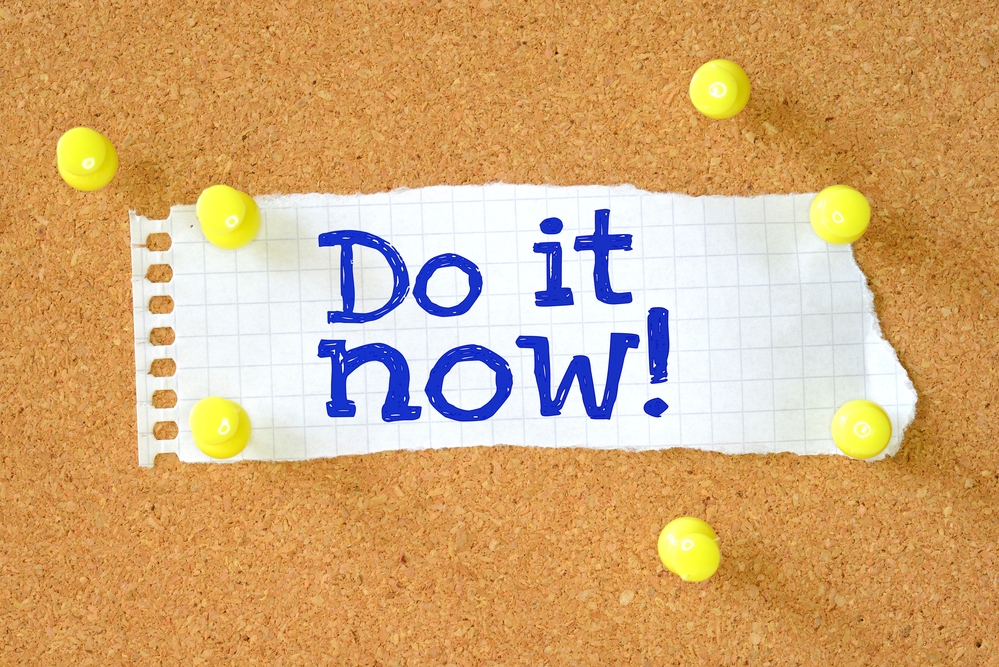
If you want to get started with SEO and in general with inbound marketing, you have to start with high-quality content. That’s why we showed you how to plan, research, create, market and finally optimize your content step by step. This should get you plenty of visitors. But what do you do after that? Do you hope that they will somehow become customers?
I have to admit this mistake to myself as well. I used to create and market plenty of content. As a result, my audience on several of my websites grew quickly. But the strict focus on leads and sales wasn’t there. I didn’t focus well enough here. I just relied on it and hoped. That was a little lazy. Hope marketing is dangerous. Let’s take a closer look why that is.
Why “Hope Marketing” Doesn’t Work

We talk about hope marketing when you don’t have a strategic plan, but just hope that somehow you’ll win customers or leads.
Hope is a great thing. But unfortunately not a marketing strategy.
Maybe some will be lucky with this. But in 90% of the cases it will not work.
Relying only on Hope Marketing is naive. It’s a waste of time, money and potential. A waste of your most valuable resources. That’s why you need a well thought out plan, a strategy, a system. Would you still make a road trip without a navigation system nowadays?
So you need to be focused, think of ways to get results, measure them and improve them. Only then can you effectively manage your marketing. The first step here is not to hope, but to be proactive. That’s why you first need your visitors’ permission to contact them.
Permission marketing is key
Seth Godin laid the foundation for inbound marketing back in 1999 with “permission marketing” arguing that we need our potential customers’ permission to contact them. Permission marketing is about the privilege (not the right) to send expected, personalized and relevant messages to people who want to receive them.
The problem is that your anonymous visitors you’ve worked so hard to get quickly disappear. Maybe even forever. That’s why you should ask for their contact information so you can contact them later. These contact details are your leads, your potential customers. But they’re also your subscribers, your audience. That’s your most important asset.
Therefore, invest into the relationship with your audience and slowly build trust.
If you want to get married, you don’t go to the pub and ask the first person you meet, do you? Unfortunately, that’s exactly what many companies do with their marketing! 😉 No, rather you ask carefully and then go on a date. If the date was good, you go on another one. It’s exactly the same with inbound marketing.
Since your visitors are basically not interested in your company, but only in their own problems, needs and desires, you should start here and support them. To do this, you use lead magnets.
Lead Magnet

You have to provide your visitor with something of value in return for their valuable contact information. Otherwise, it’s not a fair deal. The beauty of lead magnets is also that they automatically filter out the wrong prospects. You can make use of the following formats when creating them:
- Free updates
- E-books
- Reports
- Checklists
- White papers
- Case studies
- Email courses
- Videos
- Webinars
- Discounts
- Free tools
The format is not so crucial. It just has to fit the situation we are in. You can let your creativity run wild here.
Especially free updates offer a small benefit and are created quickly, because you don’t have to create any content for them. It may even be that something like this is better received than an e-book, for example. Maybe your target audience cares more about staying up to date than learning old knowledge?
We decided to use an e-book, for example. Here you’ll learn everything you need to know to get started with SEO.
Call-to-Action

Ask and you will be answered. After you create a lead magnet, you need to actively promote it. This may sound a bit strange, but you always need to proactively ask your visitors to take an action. To do this, you create a call-to-action (CTA) that attracts attention and creates an incentive to leave their contact information.
As the name implies, it is a call to action.
This call to action can consist of a text, an image, a button or a box with all these elements.
This CTA then links to a page (more on this in a moment) where there is further information for the action. If you want to create a call-to-action, pay attention to the following elements:
- Image – create an image that attracts attention (e.g. an image of an e-book)
- Headline – create a headline that includes a benefit (e.g. “The essence of our best posts”)
- Text – describe the benefit and possibly features of the “offer” (e.g. “Everything you need to know”, “248 pages”, etc.)
- Button – make a direct request that includes the benefit (e.g. “Download now”)
As mentioned, you can also leave out elements. There is no right or wrong here. Sometimes only a button is appropriate, sometimes only a text, sometimes an entire box. Place your call-to-action on every page if possible. The home page, your content pages, and your about page are all good places for this.
This way, your visitors land on your website and are taken directly to the next action. This is also the only goal of your website: the click on the CTA and the redirect to your landing page.
Landing Page

On a landing page, your visitor will find more information about the action. It describes the benefits and provides him with certainty. Accordingly, it is a simple page that has only one goal (the visitor’s action) and focuses on it with every element.
Generally, a landing page should not have any elements that distract from the actual action. That’s why you won’t see any navigation there. The visitor only has the choice of choosing the e-book or leaving the page. Visually, the yellow buttons that motivate action stand out. Also, each text focuses only on describing the benefits of the e-book.
As I said, the entire page has only one goal: DOWNLOADING the e-book! If you want to create a landing page, make sure that all these elements appear as much as possible.
You should feel free to create many different landing pages. For my media buying campaigns and my real estate lead gen site I ahve currently about 20 in use. And there are more and more. 50 to 100 landing pages are not unusual for some companies.
A Form

If you want to retrieve the valuable contact information of your visitors, you need a form.
That’s why you should at least ask for the email, as it’s still one of the best marketing channels.
In general, you should use as few fields as possible. Because the more fields, the worse the conversion rate. So you’ll get fewer signups. I’m a big fan of simplicity, so I recommend you start with just the email. After that you can experiment with e.g. the name and see if that works better.
You then put this form (as we did in our e-book example) prominently 1-3 times on the landing page. Alternatively, you can skip the landing page step and insert your form directly into your CTA box.
By doing this, you save yourself a little effort, but also have much less room to speak of the benefits. You just have to test something like that out.
Thank You Page

After your visitor fills out a form, he should get a feedback. That’s why you should redirect him to a Thank You page. Up to this point, your visitor has placed a lot of trust in you. You should use this chance to continue and strengthen the relationship.
After subscribing, you will get clear instructions to download the e-book in your desired format. Also, you can share the landing page via social media. Most importantly, I’d make a concrete offer.
When you create a Thank You Page, you should first treat it like a landing page. So keep it as simple as possible. Also, pay attention to the following points:
- Say thank you – Be human and show your gratitude. We all learned this as a child, right? 😉
- Make clear instructions – Fulfill your promise and deliver clear steps to get your offer.
- Hide the navigation – At this point, you can again hide the navigation so your lead can continue browsing around.
- Deliver relevant content – Recommend appropriate or further content, deliver value and build trust.
- Offer free updates – Here you can also include a free update form to keep your lead updated.
- Show personality – Write a personal text or create an audio or video to show your face and personality.
- Offer social buttons – Motivate your lead to share your lead magnet or follow your social media profiles.
- Make an offer – At this point, another action seems like no big hurdle. Therefore, you can place another CTA that focuses on the next logical step in your funnel. So, make an offer for your product or service. Here, a one-time discount is also a nice incentive.
Also, don’t forget to send an automatic email here with the download link and possibly your offer so your lead can archive it.
Conversion optimization

You should set up your inbound marketing process as soon as possible and then optimize it regularly. Maybe you’ve already set up everything from lead magnets to thank you pages and it’s converting like gangbusters. But if not, you need to optimize.
In general, there’s always something to optimize. Better is always possible! 😉
I’m sure you’re wondering what a good conversion rate (CR) is. That is, what percentage of visitors leave their contact details. Unfortunately, this is always difficult to say, because markets and products are very different. But here are some rough guidelines that you can use as a guide:
- Calls-to-Action – up to 5% CR
- Landing Pages – up to 65% CR
If you have decent traffic, you can do A/B testing. This means that, for example, half of the visitors see one landing page and the other half see a slightly different one. This way you can find out in a scientific way and with statistical significance which element converts better.
Final thoughts
I used to create content and promote it to get visitors. But I made the mistake of hoping that they would somehow become customers. You should do that differently. That’s why you should have a precise strategy on how to turn your visitors into leads.
As discussed, this process can also be shortened if you include the form directly in the call-to-action. Basically, lead gen or affiliate marketing is about building such a system and optimizing it regularly. So you have to create a simple concept, test it and then look at the metrics. Did it make a difference, or not?
That’s exactly how you turn your website into a lead generation machine!
You want to know how to get this done? How to build lists of potential clients and how we convert them into happy customers?
Then sign up now to our newsletter and become a better SEO marketer!
All the best,
Fabian
